26
December 2001
A
large number of Dabs, Limanda limanda,
were caught by Jeff,
an angler off Shoreham Harbour Arm, a least 10
over 30 cm long were taken home as large enough to make a decent meal.
This flatfish are caught until February inshore off Sussex. Smaller fish
were also caught.
Sussex
Marine Life
A Red
Fox, a vixen, is spotted regularly foraging
around the litter bins at Shoreham Community centre, Pond Road.
19
December 2001
The
Pied
Wagtails are back flitting around the
back streets of Shoreham for the winter. They seem a bit late this year.
One or twos had been seen in the preceding weeks and there were hundreds
in the countryside.
18
December 2001
A
few (at least three) Great Tits
were seen in the conifer tree, Monterey Pine, next to the twitten
to the east of the Health Centre in Pond Road, Shoreham, just north of
St. Mary de Haura churchyard. This bird is a tricky identification from
a fleeting glance as they can be mistaken for the locally rare Coal
Tits. The identification was made because
of their size, appearing bulkier than the Blue
Tit. These tits have frequently been seen
before in churchyards and on the Adur Levels (cycle
route from Old Shoreham to Bramber).
16
December 2001
A
cold dry breeze and temperatures just above freezing and all the leaves
already stripped from the deciduous trees enabled a Jay
to
be noticed in the large back garden adjoining the south-west corner of
Buckingham Park, Shoreham. Unless you are fortunate enough to have a large
garden with an Oak
tree, this colourful member of the crow family, Corvidae,
is unusual in Shoreham. My attention was drawn by commotion this bird caused
amongst the three perching Wood Pigeons.
10
December 2001
A
very late and battered Red
Admiral Butterfly settled on a Hebe shrub
in my Lancing garden (TQ 185 046).
Butterflies
of Lancing
8 December
2001
A
very small falcon flew rapidly parallel with the footbridge the full 150
metres width of the River Adur into the evergreen shrubbery by the bungalows
at the south end. It was probably a first year Kestrel.
It
appeared much smaller and drabber than the normal handsome tiercel,
possibly a tiercelet.
5 December
2001
Two
deer, probably Roe Deer,
are seen for the first time in Ricardo's Test Field (TQ
201 062) next to the A27 trunk road and east
of the Sussex Pad.
A Peregrine
Falcon is spotted again (first report on these pages) roosting
on Southwick Power Station in Shoreham harbour.
4
December 2001
Like
an arrow a Grey Heron
squawked continuously as it flew upriver over the footbridge crossing the
Adur between Coronation Green and Shoreham beach. The Heron's bulk was
smaller than the accompanying juvenile Herring
Gulls, but when approached the roosting
area for 40 Greater Black-backed Gulls,
hundreds of Black-headed Gulls,
and a small flock of 40 Lapwings plus
other estuarine birds, its
appearance caused hundreds of birds to take to the air. Rafts of Mallards
numbered over 45 in one group, a larger number than normally seen on the
River Adur estuary.
3 December
2001
The
woodland floor of Lancing Ring
is carpeted with fallen leaves under the Beech trees in this area giving
a patchwork of autumnal colours from yellow to brown. Under the Ash trees
elsewhere the leaf litter is far less colourful. It has become quite muddy
in places as walkers have trod the well used paths. The dewpond
looks calm, it's aquatic plants looking yellowed as winter approaches.

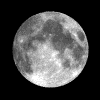 29
November 2001
29
November 2001
A
Full Moon is at 8:51 GMT, the second Full Moon in the month is known as
a Blue
Moon.
29
November 2001
A
couple of the large white ducks, with a bright orange band around their
long necks, were Shelducks,
which appeared a large duck when they waddled around much larger than the
convoy of Mallards,
but when on the surface water of Widewater Lagoon
the Shelducks appeared smaller. Shelducks are the largest of the British
ducks and they feed on molluscs and crabs
which are not to be found in any quantities in Widewater Lagoon.
27
November 2001
A
very late brown-looking Red Admiral
Butterfly is seen fluttering around Shermanbury.
25
November 2001
A
seal
was seen off Brighton beach, Sussex in the English Channel. This is outside
the normal range of all species of pinnipeds. It was swimming between Brighton's
two piers heading east to west. The seal swam at the surface and dived
on occasions and appeared to be in good health. They have been seen as
occasional vagrants before, notably off Shoreham
a few miles to the west.
BMLSS
Seal Page
Seal
Conservation Society
Sussex
Marine Life
23
November 2001
There
are still butterflies around, probably a
Red
Admiral one seen in Shoreham and one in
Portslade by Allen Pollard,
although the butterflies appeared brown. Gary
Lane also saw one flying around the railway embankment in Lancing.
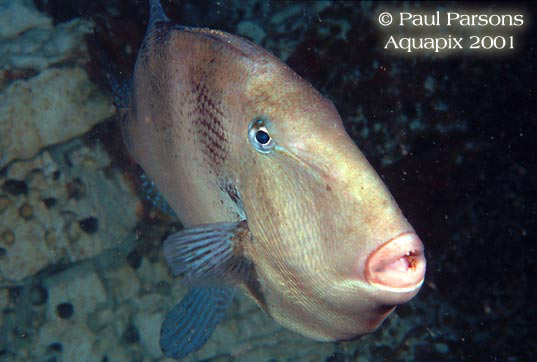 18
November 2001
18
November 2001
Triggerfish,
Balistes capriscus, in fine condition were discovered inhabiting part
of the undersea chalk cliff face known as the Worthing Lumps, about 3 miles
off the Sussex coast. About 15 adult fish were found, most of them inhabiting
the rock crannies in the clear cold (12° C) water, but one fish
ventured out into the open. Divers rarely have the opportunity to observe
Triggerfish in the winter because of the inclement weather restricts the
diving
opportunities.
Excellent
photographs and Triggerfish information page (link)
Rockpooling
under Worthing Pier
14
November 2001
A
Green
Woodpecker is spotted up a Beech tree
on Lancing Ring near the Dewpond.
This attractive bird can be found in country gardens and occasionally in
large town gardens in the Adur district, notably St. Michael's vicarage
in Southwick and at Shermanbury.
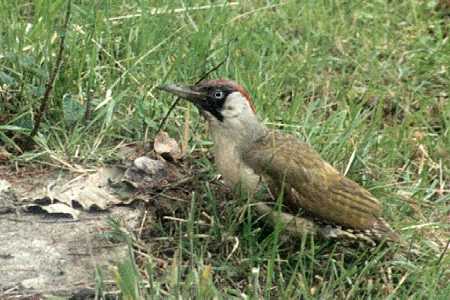
November
2001
Green
& Great Spotted
Woodpeckers seen and heard around Lancing
Clump.
Yellowhammers
and Stonechats
present on the western hillside. Long-tailed
Tits and a single Goldfinch
were seen on the south meadow. Skylarks
were spotted and heard particularly towards Steep Down and the Trig point.
Red
Admiral Butterflies flew strongly on sunny
days.
Report
by Veronica Altringham
13
November 2001
A
due north (boreal) wind brought a chill to the air. On the Kingston
beach the low spring is recorded at 0.7 metres but it receded almost
to Chart Datum. On the Sussex
coast, the mobile shore fauna almost completely disappears in after
the first spring tides in October with hardly a
straggler prawn or Shore
Crab left behind.
Under
rocks there were some very small (to 12 mm) juvenile Rock
Gobies, and a couple of Netted Dogwhelk shells appearing empty but
discovered to be occupied by tiny Common Hermit
Crabs. The small crustacean Athanas nitescens was
common (50+) under one small boulder.
Full
Report
 12
November 2001
12
November 2001
In
my Lancing garden the Starling
population seems to be increasing noticeable since the weather took a chill.
Their chit-chat whistles and calls from their perches in the Hawthorn
trees are only drowned by the sound of somebody cutting paving bricks a
few doors away !.
A
pair of Blackbirds
occasionally visit as does a Song Thrush
which is always a welcome sight. A Robin
can seen regularly amongst the shrubbery.
The
Sparrows
and Greenfinches now have to compete with the Starlings for a position
at the hanging feeders.
Full
Report
10
November 2001
The
chill of the last two days finally brought an end to the above average
temperatures of October. However, a Red
Admiral Butterfly fluttered across my
south Lancing garden.
5 November
2001
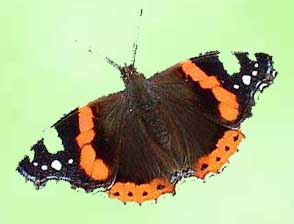 A
Red
Admiral Butterfly fluttered strongly over
my front garden in Corbyn Crescent, Shoreham (TQ
224 053), the first of this species I had
recorded in this residential street.
A
Red
Admiral Butterfly fluttered strongly over
my front garden in Corbyn Crescent, Shoreham (TQ
224 053), the first of this species I had
recorded in this residential street.
November
2001 Butterflies (All of Britain)
3 November
2001
A
late Red Admiral Butterfly
flew up from the shrubbery around Glynebourne Court opposite the Civic
Centre near the centre of Shoreham. Most, but not all, of these butterfly
reports are in the town so they may be hibernating
insects being disturbed and this is what Allen
Pollard thought this was the case of a Peacock
Butterfly and two Red
Admirals at Shermanbury.
Adur
Butterflies
Young
Goldfinches
were frequently seen, notably on Middle Road Recreation Ground, Shoreham.
2 November
2001
A
bright still sunny day with the Shoreham waterfront buildings casting reflections
into the midday spring high tide with Mute
Swan cygnets, now the full adult size,
on both the River Adur estuary
near the footbridge and on Widewater Lagoon.
Red
Admiral Butterflies were frequent (30+),
singly everywhere where there was vegetation and over the shingle
beach, Adur levels and the river. All the
butterflies
were flying strongly and in good condition.
 The
most interesting insect around was a small
darter dragonfly with a salmon-pink abdomen,
which was almost certainly the Common Darter
Dragonfly, Sympetrum striolatum.
On
the Adur levels (TQ 209 068) they were mating over the duckweed stream
and they were frequently seen (25+) on the flood plain and on the towpath
by the Airport. The abdomen appeared slightly bent when this dragonfly
settled.
The
most interesting insect around was a small
darter dragonfly with a salmon-pink abdomen,
which was almost certainly the Common Darter
Dragonfly, Sympetrum striolatum.
On
the Adur levels (TQ 209 068) they were mating over the duckweed stream
and they were frequently seen (25+) on the flood plain and on the towpath
by the Airport. The abdomen appeared slightly bent when this dragonfly
settled.
Dragonfly
Flight Times
Pretty
young Goldfinches
were in the bushes on the railway track south of Old Shoreham.  A
male Kestrel
perched on the wooden stork sculpture. My distinct impression was the small
size of this falcon compared to the female. It left its perch to dive amongst
the grasses and then quickly returned to its look-out post.
A
male Kestrel
perched on the wooden stork sculpture. My distinct impression was the small
size of this falcon compared to the female. It left its perch to dive amongst
the grasses and then quickly returned to its look-out post.
1 November
2001
A
solitary House Martin
flew north over Lancing Beach Green in the late afternoon. This bird was
bit late on its migration to Africa, but stragglers are not particularly
unusual.
A
Full Moon at 5.43 am

October
2001
It
was the warmest October on record, although there was no days of really
fine sunny weather after a poor summer.
31
October 2001
I
do not know if this will be the last butterfly of 2001, but a strong flying
good condition Red Admiral
fluttered around the tree and shrubbery in the Somerfield Supermarket forecourt,
in the central town part of Shoreham-by-sea. Red
Admirals were reported from Lancing and Shermanbury,
and a darter dragonfly
was also reported from the latter northern part of the Adur valley by Allen
Pollard.
Adur
Butterflies
Adur
Wildlife Gallery
30
October 2001
 Amongst
the moist grasses of the Adur levels, west of the Waterworks (TQ
209 068), the large white mushrooms with a
long white stalk appear to be Volvariella
speciosa. The appearance of the cap varies in colour from off-white
in the parasol-shaped specimens to a dirtier white almost brown in the
larger specimens which were flat, and in the older-looking specimens the
cap was upturned to form a shallow cup. The underside and gills vary from
a light straw colour the dark brown of a commercial mushroom. The cap of
the largest of seven specimens in a square metre was at least 150 mm in
diameter.
Amongst
the moist grasses of the Adur levels, west of the Waterworks (TQ
209 068), the large white mushrooms with a
long white stalk appear to be Volvariella
speciosa. The appearance of the cap varies in colour from off-white
in the parasol-shaped specimens to a dirtier white almost brown in the
larger specimens which were flat, and in the older-looking specimens the
cap was upturned to form a shallow cup. The underside and gills vary from
a light straw colour the dark brown of a commercial mushroom. The cap of
the largest of seven specimens in a square metre was at least 150 mm in
diameter.
British
Fungi Discussion Forum
On
the east riverbank south of Old Shoreham, a Black-headed
Gull repeatedly mobbed the resident Kestrel
with a lot of cawing. The Kestrel, a smaller male with its pale bluish
underside of the wings, noticeable even at 50 metres distant, could soar
out of the way with ease. There were hundreds of gulls on mud flats between
the Railway Viaduct and the Toll
Bridge.
25
October 2001
The
equinoctial neap tides show a small range receding
to 2.3 metres above Chart Datum but only
rising at 1:00 pm (BST) to 4.4 metres, compared to equinoctial spring tides
with a range up to 7 metres.
18
October 2001
Flocks
of Pied Wagtails
return to the shrubbery at the foot of Mill Hill,
wagtailing around in the upper branches of small trees.
The
small copse in the bit to the south-east of McIntyres Field, Lancing, was
cleared of a few trees and in this area a Great
Spotted Woodpecker flew between the remaining
branches, landing to peck at the tree with sharp drumming knocks.
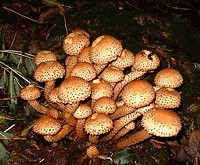 On
Lancing
Clump, one rotten tree log was covered in the Shaggy Pholiota
squarrosa fungus.
On
Lancing
Clump, one rotten tree log was covered in the Shaggy Pholiota
squarrosa fungus.
On
a warm (17° C) day, chirms of pretty Goldfinches
added flashes of colour to the vegetation between the Widewater
Lagoon and the sea.
With
the high tide lapping against the bank a pair of
Mute
Swans with three now almost full size
cygnets
visited
the estuary in the centre of Shoreham
cruising around the southern end of the footbridge.
19
October 2001
A
Red
Fox was spotted sitting on the wall outside the Bridge Hotel near the
Norfolk Bridge, Shoreham, at the east end of the busy High Street in the
early evening.
Report
by Kevin
17 October
2001
On
a low spring tide, Kingston beach was still
heavily silted near low water mark. All the pools were almost devoid of
mobile life except for a large 14 cm adult Corkwing
Wrasse near the tide marker at Chart
Datum.
10
October 2001
The albino
(white-winged) Magpie has returned to
the area of the old railway line between Old Shoreham and Ropetackle (TQ
211 052). I had seen on a couple of occasions
in the last two years, but the view was from underneath and so fleeting
that by the following day doubts had crept in and I removed the entry from
the Nature Notes page. This time I could see clearly the white upper wings
and the whole bird was whiter than a seagull with just a few black patches.
It also perched briefly before being disturbed by a Magpie with the normal
black wings.
On
the mud flats I was fortunate enough to see a Little
Egret actually catch a fish, probably
a first year Bass which it had trouble in swallowing
and tossed it around trying to get the small fish into its mouth. A Kestrel
hovered over the margins between the land and estuary.
Red
Admiral Butterflies numbered 50 or more
on the path and surrounds.
8
October 2001
In
my Lancing front garden a Painted Lady
Butterfly is making the most of today's
sunny weather, nectaring on Michaelmas daisies.
Lancing
Ring (October Image Gallery by Ray Hamblett)
Another Grass
Snake slid rapidly away on the gravel path adjacent to the petrol pump
storage area on the east riverbank near Adur Metalworks (TQ
211 052). This time there was farther for
the snake to travel before it reached any sort of cover and I could see
its darker triangular head off the ground, the first time I had seen this
in a Grass Snake. This one was smaller than the last, olive-green with
black markings, less than a metre long, as it slithered through the short
grass and disappeared. There was still no fresh water obviously nearby.
I have not seen any frogs in the area.
Previous
Snake Report
There
must still be fish in the river on this fine afternoon as there was a Little
Egret (pic)
and at least 12 Cormorants
diving under the water or fanning their wings on the rising river near
the Toll Bridge, Old Shoreham. Lapwings
(50+) plus gulls and Dunlins
were as usual.

Red
Admiral Butterflies (75+) were everywhere
on the unofficial countryside, near ivy bushes, and on waste ground. A
solitary Comma
on the uphill path from the Waterworks Road was the deep orange variety,
these colours may be indicative of the second brood. Twittering Greenfinches
in the ivy disturbed flights of Red Admirals. There were no White
Butterflies on the wing.
Adur
Butterfly Image Portfolio (Smart Groups)
Near
the Waterworks itself, not one but two Roe
Deer jumped out from the undergrowth (TQ
209 068). The dragonflies were absent but
there were small butterflies on the wing. When one settled on a grass,
it was clearly identified as the Small
Copper. Small
Tortoiseshell caterpillars still covered a
few nettle plants (see the earlier record).
Previous
Deer Report
Amongst
the Hawthorn bushes,
scores of an unseen bird were making a tremendous amount of song. They
were probably House Sparrows.
7-8
October 2001
 Exceptionally
bad weather with squalls of heavy rain.
Exceptionally
bad weather with squalls of heavy rain.
5 October
2001
The
conkers on the Horse Chestnut Tree
are just about ready for the kids.
The
high tides and rain had filled Widewater Lagoon
which looked spectacularly red with the red
variety of Glasswort
in abundance, part submerged and partly still exposed west of the bridge.
At the eastern end a Little Egret
fished in the shallows, probably for the 3-spined
Stickleback.
Butterflies
at Shermanbury as well as the plentiful Red
Admirals, there
was one Speckled Wood and
a Painted
Lady.
4
October 2001
A
Small
Tortoiseshell Butterfly in immaculate condition
(pic) was seen on the Adur
Levels near where the caterpillars were discovered (see
below).


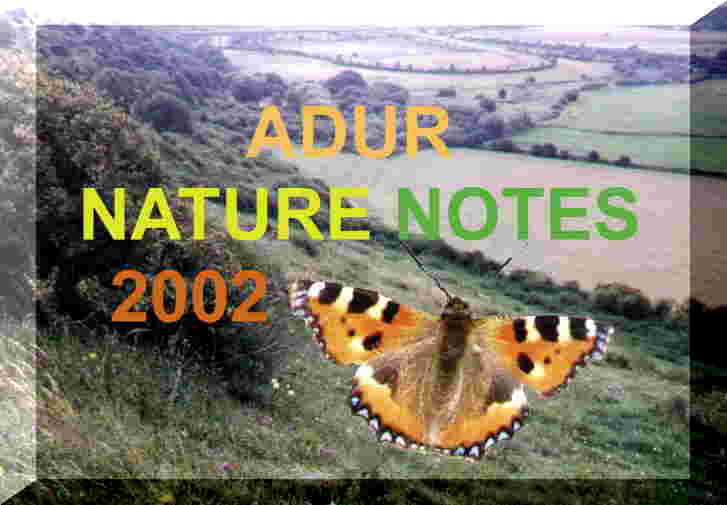


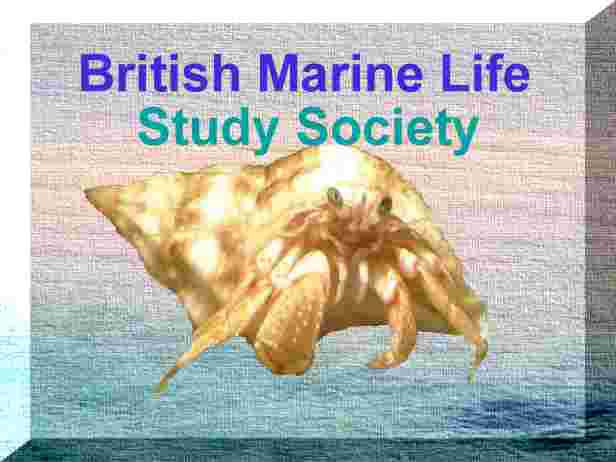

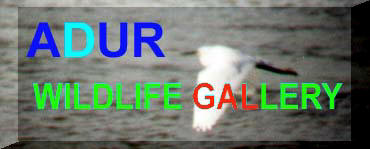

 29
November 2001
29
November 2001



 The
most interesting insect around was a small
darter dragonfly with a salmon-pink abdomen,
which was almost certainly the Common Darter
Dragonfly, Sympetrum striolatum.
On
the Adur levels (TQ 209 068) they were mating over the duckweed stream
and they were frequently seen (25+) on the flood plain and on the towpath
by the Airport. The abdomen appeared slightly bent when this dragonfly
settled.
The
most interesting insect around was a small
darter dragonfly with a salmon-pink abdomen,
which was almost certainly the Common Darter
Dragonfly, Sympetrum striolatum.
On
the Adur levels (TQ 209 068) they were mating over the duckweed stream
and they were frequently seen (25+) on the flood plain and on the towpath
by the Airport. The abdomen appeared slightly bent when this dragonfly
settled.


 Exceptionally
bad weather with squalls of heavy rain.
Exceptionally
bad weather with squalls of heavy rain.
